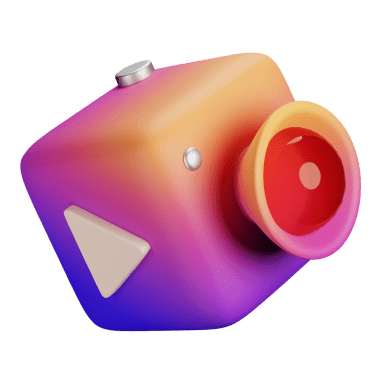“`html
Introduction to High-Converting Websites
In the rapidly evolving digital landscape of 2024, the significance of having a high-converting website cannot be overstated. A high-converting website is one that efficiently turns visitors into customers, thus enhancing both revenue growth and customer acquisition. As businesses increasingly pivot online, the ability to create a website that fosters conversions is pivotal to achieving sustained success.
The importance of a high conversion rate lies in its direct impact on a company’s bottom line. A higher conversion rate means that a greater proportion of website visitors are taking desired actions, such as making a purchase, signing up for a newsletter, or filling out a contact form. This not only boosts revenue but also improves the return on investment (ROI) for marketing efforts. For instance, a study by HubSpot revealed that companies with optimized websites are 2.5 times more likely to see a significant increase in sales.
Moreover, the trends and statistics underscore the escalating need for optimized websites. According to recent data from Statista, global e-commerce sales are projected to reach $6.5 trillion by 2024, up from $4.9 trillion in 2021. This surge emphasizes the necessity for businesses to fine-tune their websites to capture a share of this growing market. Additionally, a report by Econsultancy found that 74% of businesses believe that improving website conversion rates is a critical factor for growth.
In light of these trends, it is clear that businesses must prioritize the development of high-converting websites to stay competitive. By focusing on user experience, streamlined design, and effective call-to-action strategies, companies can significantly enhance their online presence and drive sustained growth in the digital economy of 2024.
Understanding Your Target Audience
Knowing your target audience is a fundamental step in designing a high-converting website. By understanding who your visitors are, what they need, and how they behave, you can create a website that is not only visually appealing but also highly functional and effective in achieving your business goals. Tailoring your website to meet the specific preferences and needs of your audience can significantly enhance user experience and drive conversions.
One of the primary methods for gathering data on your target audience is through surveys. Surveys allow you to ask direct questions and receive feedback from your users. This can provide valuable insights into their preferences, pain points, and expectations. Additionally, website analytics tools, such as Google Analytics, offer a wealth of information about your visitors, including demographics, behavior patterns, and traffic sources. Analyzing this data can help you identify trends and understand how users interact with your site.
Another effective way to understand your audience is by creating user personas. User personas are fictional characters that represent your ideal customers based on real data and research. They help you visualize your audience and keep their needs and goals in mind throughout the design process. User personas typically include information such as age, gender, occupation, interests, and challenges. By referring to these personas, you can make more informed decisions about your website’s design and content.
Once you have gathered sufficient data, you can use this information to tailor your website’s design, content, and functionality. For instance, if your data shows that a significant portion of your audience accesses your site via mobile devices, you should prioritize mobile responsiveness. Additionally, understanding your audience’s preferences can guide your content strategy, ensuring that you provide relevant and engaging information that resonates with your visitors. Customizing your website’s functionality to cater to your audience’s needs, such as incorporating user-friendly navigation or personalized recommendations, can further enhance user experience and increase the likelihood of conversions.
A high-converting homepage serves as the cornerstone of any successful website, acting as the gateway for potential customers. To achieve this, several essential elements must work in harmony to capture the visitor’s attention and guide them towards taking action.
Compelling Headline
The first crucial element is a compelling headline. This headline should be clear, concise, and immediately convey the primary benefit or value proposition of your website. It must grab the visitor’s attention within seconds, compelling them to explore further. A strong headline sets the stage for the entire user experience, establishing a clear context for what the visitor can expect.
Clear Value Proposition
Following the headline, a clear value proposition is essential. This element succinctly communicates what makes your product or service unique and why it is the best choice for the visitor. A well-crafted value proposition addresses the visitor’s needs and pain points, offering a solution that resonates with them. This clarity helps to differentiate your offerings in a competitive market, encouraging the visitor to stay engaged with your site.
Strong Call-to-Action (CTA)
A strong call-to-action (CTA) is another key component. The CTA should be prominently displayed and clearly instruct the visitor on what to do next, whether it’s signing up for a newsletter, making a purchase, or requesting more information. Effective CTAs are action-oriented, using persuasive language and often featuring contrasting colors to stand out visually. Multiple CTAs can be strategically placed throughout the homepage to guide visitors through the conversion funnel.
Social Proof
Social proof plays a significant role in building credibility and trust. Including testimonials, customer reviews, and case studies can demonstrate that others have had positive experiences with your product or service. This validation from previous customers can reassure potential clients, reducing their hesitation and increasing the likelihood of conversion.
Trust Signals
Finally, trust signals such as security badges, privacy assurances, and recognizable brand logos help to establish reliability and confidence. These elements communicate that your website is safe and trustworthy, which is particularly important for e-commerce sites where visitors are concerned about the security of their personal information.
By integrating these essential elements—compelling headlines, clear value propositions, strong CTAs, social proof, and trust signals—into your homepage, you create a cohesive and persuasive environment that encourages visitors to take meaningful actions, ultimately driving higher conversion rates.
Optimizing Website Navigation and User Experience
In the realm of digital interactions, intuitive navigation and seamless user experience (UX) serve as pivotal elements in enhancing conversion rates. A well-structured website that guides visitors effortlessly through its content significantly increases the likelihood of conversions, be it sales, sign-ups, or other desired actions. This section delves into best practices for optimizing website navigation and user experience.
At the forefront of effective website navigation is the implementation of clear and concise menus. Menus should be straightforward, categorically organized, and easily accessible. Utilizing a hierarchical structure allows visitors to find the information they seek without unnecessary clicks. Breadcrumb trails complement this by providing a linear navigation aid, enabling users to track their path and effortlessly return to previous pages.
Search functionality is another critical component in enhancing user experience. An accessible and efficient search bar allows users to quickly locate specific information or products, reducing frustration and improving satisfaction. The search bar should be prominently placed, typically at the top of the webpage, and equipped with predictive text and filters to refine search results.
The importance of responsive design and mobile optimization cannot be overstated in today’s digital landscape. With an increasing number of users accessing websites via mobile devices, ensuring a consistent, high-quality experience across all devices is paramount. Responsive design techniques ensure that web pages adjust fluidly to different screen sizes and orientations, providing an optimal viewing experience whether accessed on a desktop, tablet, or smartphone.
Mobile optimization goes hand in hand with responsive design. It involves fine-tuning various elements, such as font sizes, button placements, and load speeds, to cater specifically to mobile users. Pages should load quickly and be easy to navigate with touch gestures, ensuring that mobile visitors encounter the same seamless experience as those on larger screens.
By integrating these strategies of clear menus, breadcrumb trails, efficient search functionality, responsive design, and mobile optimization, websites can significantly enhance user experience and, consequently, conversion rates. Prioritizing these elements ensures that visitors not only find what they are looking for but also enjoy their journey through the site.
Crafting Persuasive and Engaging Content
In the realm of digital marketing, content serves as the cornerstone of a high-converting website. High-quality, relevant, and persuasive content can significantly drive conversions by resonating with your audience and compelling them to take action. To achieve this, it’s essential to strategize and tailor your content to meet the needs and preferences of your target audience.
First, understanding the different types of content and their unique roles is crucial. Blog posts, for instance, can establish your brand as an authority in your niche by providing valuable information and insights. Regularly updated, well-written blog posts not only attract and engage visitors but also improve your website’s SEO, making it more discoverable to potential customers.
Product descriptions, on the other hand, should be concise yet compelling, highlighting the key features and benefits of your offerings. A focus on the unique selling points and addressing potential customer concerns can significantly enhance the persuasiveness of your product descriptions. Using power words and action verbs can further motivate readers to proceed with a purchase.
Landing pages are another critical component, designed to convert visitors by focusing on a single call-to-action (CTA). Effective landing pages are clean, visually appealing, and direct, with a clear headline, engaging subheadings, and compelling content that guides the visitor towards the desired action. The inclusion of testimonials, trust badges, and a strong CTA can significantly boost conversion rates.
Readability is a vital factor across all content types. Utilizing short paragraphs, bullet points, and subheadings can enhance the readability of your content, making it more accessible to a wider audience. Additionally, incorporating relevant keywords naturally within your content can improve its SEO, further driving traffic to your website.
Visual elements, such as images, infographics, and videos, can complement your written content, making it more engaging and easier to digest. High-quality visuals not only break the monotony of text but can also illustrate complex concepts more effectively, thereby enhancing user experience and encouraging conversions.
“`html
Implementing Effective Calls-to-Action (CTAs)
Crafting effective Calls-to-Action (CTAs) is a pivotal element in creating a high-converting website. CTAs are designed to prompt visitors to take specific actions, which could range from signing up for a newsletter to making a purchase. Understanding the various forms that CTAs can take and optimizing their placement, design, and copywriting is crucial to maximizing their impact.
CTAs can manifest in multiple forms, including buttons, links, and forms. Buttons are the most common type, often characterized by bold colors and compelling text that stands out on the page. Links, though subtler, can be equally effective when integrated seamlessly within the content. Forms are typically used for collecting user information and can be crucial in lead generation strategies.
Placement of CTAs is as important as their design. Positioning them above the fold ensures visibility without the need for scrolling. Incorporating CTAs within the flow of your content, such as at the end of a blog post or strategically within a product description, can guide users naturally towards the desired action. Utilizing exit-intent popups can also capture the attention of users about to leave the site, providing a final opportunity to engage them.
Design plays a critical role in the effectiveness of a CTA. The button should be visually distinct, employing contrasting colors to stand out against the background. The use of whitespace around the CTA can make it more noticeable, while the size should be large enough to attract attention but not so large as to appear intrusive.
Copywriting for CTAs should be concise and action-oriented. Using verbs like “download,” “subscribe,” or “buy now” can create a sense of urgency and drive user action. Personalization can further enhance the effectiveness, with phrases like “Get your free eBook” or “Start your free trial” resonating more with users.
Analyzing high-converting CTAs reveals common traits such as clarity, urgency, and relevance. For example, Dropbox’s “Sign up for free” button is straightforward and benefits-focused, while Amazon’s “Add to Cart” button is clear and action-oriented. These examples highlight the importance of simplicity and directness in CTA design.
Leveraging Analytics and A/B Testing
In the digital landscape of 2024, leveraging analytics tools is indispensable for tracking website performance and identifying areas for improvement. Analytics provide a comprehensive overview of user behavior, engagement metrics, and conversion paths, allowing businesses to make informed decisions. Google Analytics, for instance, offers insights into page views, bounce rates, and user demographics, which are crucial for optimizing a website’s performance.
A/B testing, or split testing, is a powerful method to evaluate changes and determine the most effective strategies for enhancing conversion rates. The process begins with setting up tests, which involves creating two or more variants of a webpage element, such as headlines, call-to-action buttons, or images. The control version (A) is compared against the variant (B) to assess which one performs better in achieving a specific goal, such as higher click-through rates or increased sales.
Choosing the right variables to test is essential for meaningful results. Prioritize elements that directly impact user experience and conversion rates. For example, testing different headline texts can reveal what resonates most with your audience, while experimenting with button colors may uncover subtle changes that significantly boost user interaction.
Once the tests are live, it is crucial to analyze the results meticulously. Use statistical significance to determine whether the observed differences are likely due to the changes made or merely by chance. Tools like Optimizely and VWO simplify this process, providing detailed reports and insights.
Continuous testing and data-driven decisions are the bedrock of a high-converting website. By iteratively testing and refining various elements, businesses can achieve incremental improvements over time. This approach not only ensures that the website evolves with user preferences but also maximizes the potential for higher conversion rates and overall success.
Maintaining and Updating Your Website for Long-Term Success
Ongoing website maintenance and updates are critical to ensuring the long-term success of any online presence. Regular content updates are essential to keep visitors engaged and returning for more. Fresh, relevant content not only entertains and informs your audience but also signals to search engines that your website is active, which can positively impact your search rankings.
Equally important is the maintenance of the software that powers your website. This includes keeping your content management system (CMS), plugins, and other tools up-to-date. Regular updates often contain critical security patches that protect your site from vulnerabilities and cyber threats. Ignoring these updates can leave your website exposed to attacks, potentially resulting in data breaches or loss of functionality.
Security maintenance goes hand-in-hand with software updates. Implementing a robust security protocol, including regular backups, ensures that you can quickly recover your site in case of an incident. Additionally, utilizing SSL certificates and maintaining secure passwords are fundamental practices to safeguard sensitive information.
Staying up-to-date with web design trends and emerging technologies is another key aspect of website maintenance. As user preferences and technology evolve, so should your website. Modern web design trends emphasize user experience (UX) and mobile responsiveness. Ensuring your site is visually appealing, easy to navigate, and accessible on various devices can significantly enhance user satisfaction and conversion rates.
Continuous monitoring and optimization are also crucial for maintaining peak website performance. Utilizing tools like Google Analytics enables you to track user behavior, identify issues, and make data-driven decisions. Regularly testing page load speeds and optimizing images and code can improve site performance, reducing bounce rates and increasing user retention.
In essence, maintaining and updating your website is not a one-time task but an ongoing commitment. By consistently managing content, ensuring software and security integrity, staying current with design trends, and continuously monitoring your site, you can achieve and sustain long-term success.









